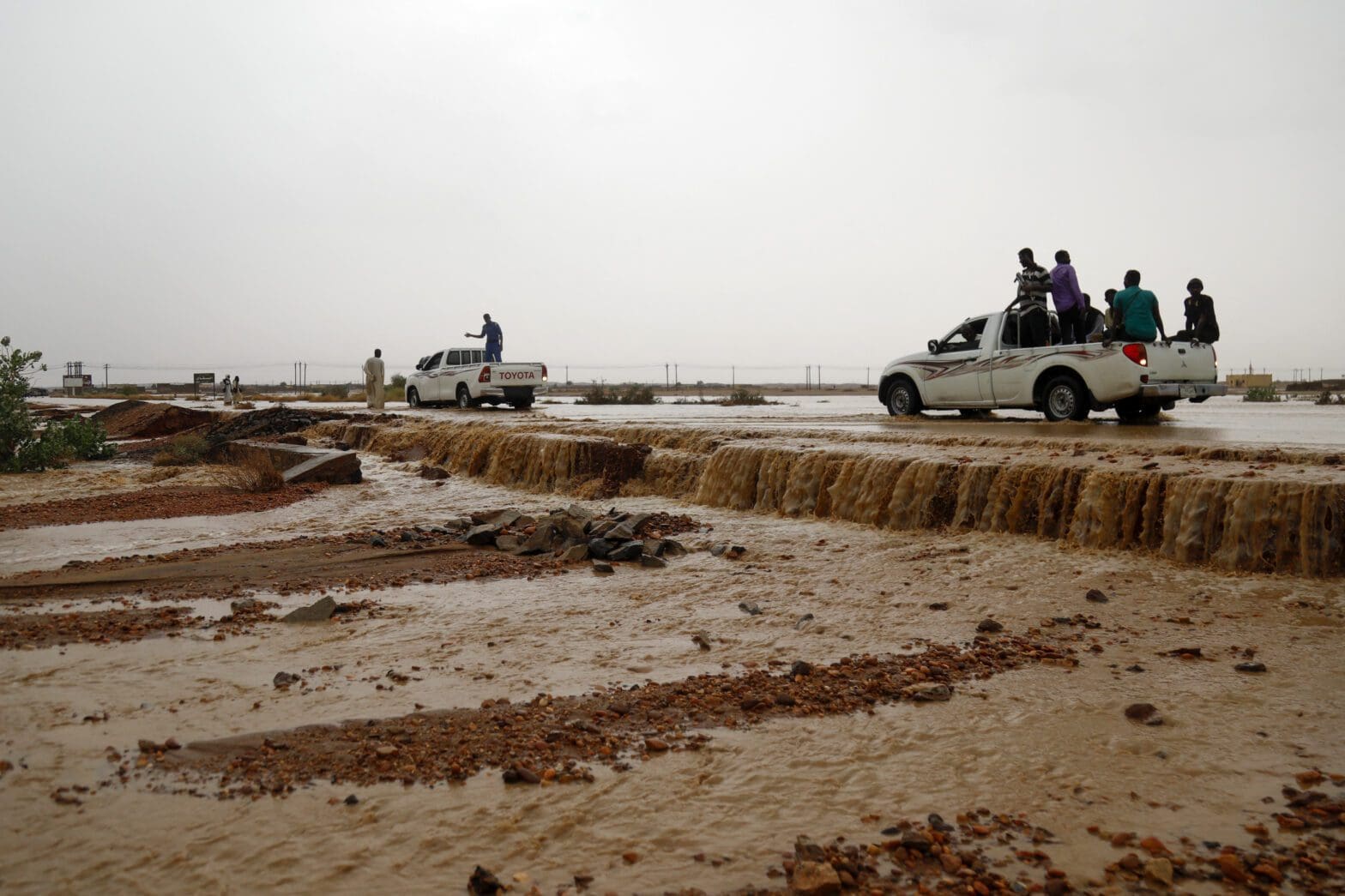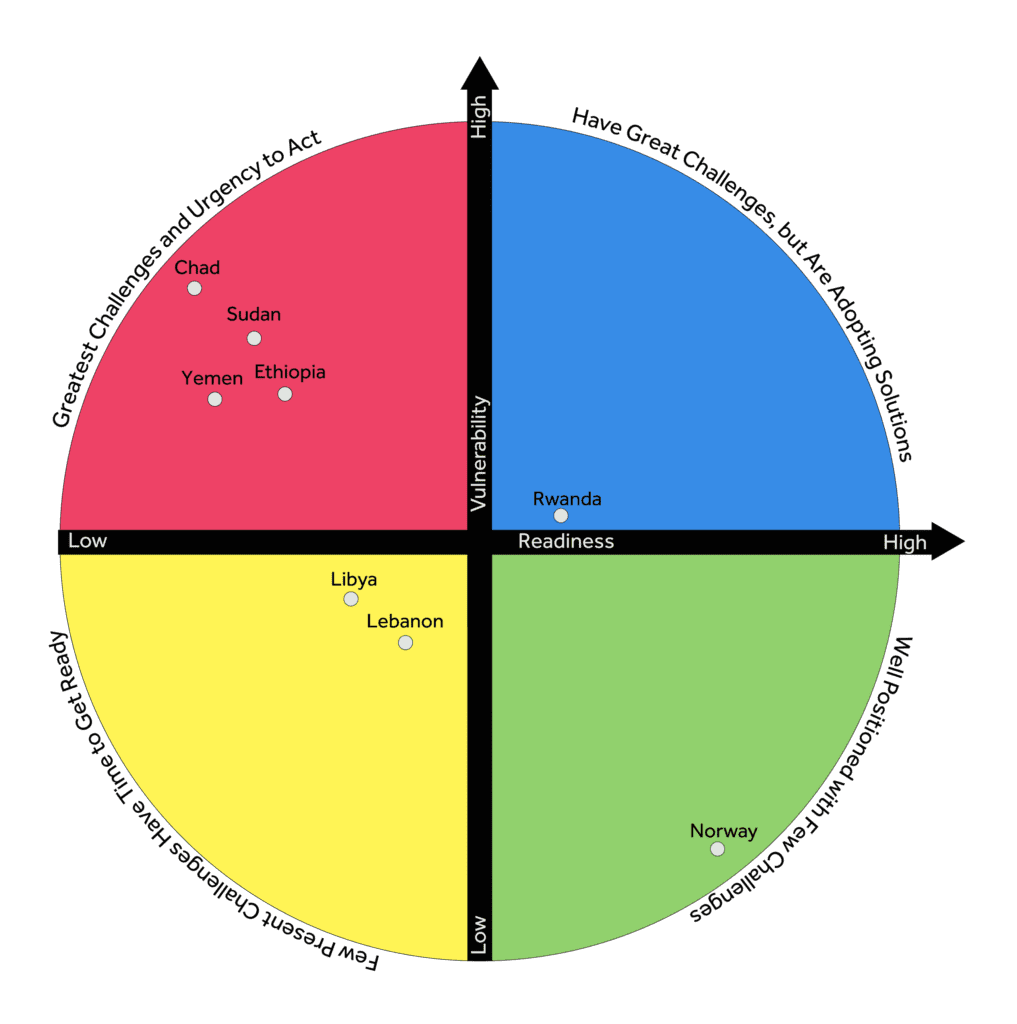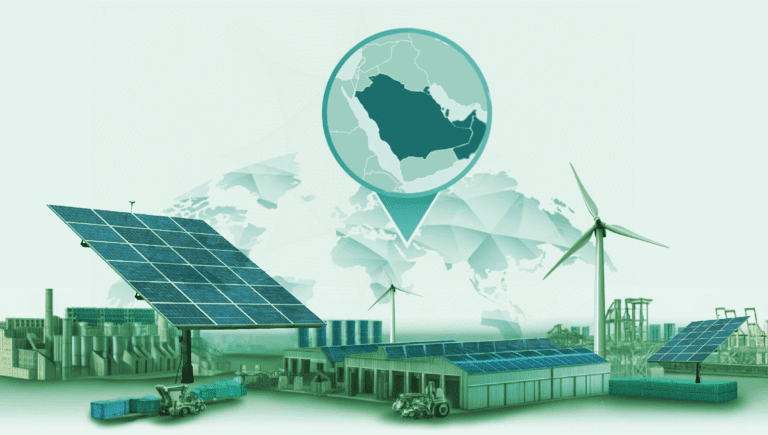
Sudan’s Puzzle:
Confronting Climate Change in a War-torn State
Issue Brief, April 2024
Key Takeaways
Unprecedented Environmental Toll: The ongoing war in Sudan is inflicting untold human suffering and devastating the country’s ecosystems. The conflict poses far-reaching threats to biodiversity and ecological stability, with long-term repercussions for Sudanese society including heightened climate vulnerability, deforestation, and soil degradation.
Displacement and Environmental Degradation: One of the most significant challenges is that the concentration of internally displaced people in specific areas intensifies local demand for limited resources. This creates a vicious cycle of conflict-driven migration and environmental degradation, which can only be broken through holistic interventions.
Immediate and Coordinated Action: Addressing these challenges requires rapid and coordinated actions from all stakeholders. A ceasefire is urgently needed to prevent a human and environmental catastrophe in Sudan, as well as addressing humanitarian needs in conflict hotspots and areas hosting large internally displaced populations.
Building Resilience: The conflict and associated environmental challenges necessitate urgent resilience-building strategies. These include enforcing environmental regulations, promoting sustainable land use, and investing in climate resilience and adaptation measures to mitigate the impacts of both conflict and climate change on the environment and the human population.
Introduction
Sudan is one of the world’s most vulnerable countries to climate change.1 Rising temperatures, increasingly erratic monsoon rains, prolonged droughts, and frequent flooding pose mounting threats to both the environment and human society. Despite some efforts to mitigate these phenomena, Sudan’s latest conflict has highlighted the complex relationship between environmental fragility and geopolitical turmoil.
On April 15, 2023, a long-running power struggle between the Sudanese Armed Forces (SAF) and the paramilitary Rapid Support Forces (RSF) spilled over into a country-wide devastating war. The ensuing war has since killed thousands of people, displaced millions internally and externally, and triggered a dire humanitarian crisis.2 This calamity has roots in preexisting structural challenges, including the legacy of colonialism, political and economic instability, population growth, and climate change. Indeed, the accumulation of these challenges has arguably accelerated the violence and accentuated the political divisions that underpin it.3
The war has yielded a grim tableau of devastation.4 It has brought catastrophe to an already fragile economy and intensified food insecurity—42% of Sudan’s population is experiencing high levels of acute food insecurity.5 It has also pushed the healthcare sector to collapse, due to drastic shortages of funding and essential supplies.6
The impact of the conflict has extended to the destruction of Sudan’s fragile infrastructure and its vulnerable natural environment. Media reports have conveyed some of the human suffering wrought by the war, but coverage of the environmental fallout has been limited. The belligerents have committed many crimes and violations that amount to ecocide, such as deliberately destroying oil facilities, damaging crucial ecosystems, and attacking water supply and wastewater infrastructure.7 The accumulation of refuse and dead bodies in the streets has highlighted the human impact and public health dangers of environmental destruction.
At the time of writing, efforts to negotiate peace in Sudan have not yielded fruit. However, experiences in neighboring, conflict-affected countries—notably Libya, where the collapse of a dam caused catastrophic flooding in the city of Derna in the early hours of September 11, 2023—starkly demonstrate that environmental issues should not be neglected in peace efforts. Stakeholders should evaluate and address the impact of war on the environment and infrastructure, seeing the hazards posed by climate change and environmental degradation as severe problems requiring urgent intervention.
This issue brief examines the environmental repercussions of the conflict in Sudan by comprehensively analyzing the links between war and climate change. It argues that addressing environmental and humanitarian challenges requires a holistic approach that includes de-escalating conflict, resource management, and community empowerment. Indeed, both internal and external actors must be engaged in this process in order to overcome the challenges.
Sudan’s Climate Vulnerabilities
Sudan shows stark signs of vulnerability to climate change. The University of Notre Dame’s ND-GAIN Matrix8 ranks it the 8th most vulnerable out of 185 countries in the world, and 175th in terms of readiness and positioning it in the upper-left quadrant, indicating a level of greatest challenges and urgency to act. The country indeed scores high on the vulnerability9 measure and low in terms of readiness10 (Figure 1).11 These figures reflect towering obstacles to Sudan’s ability to achieve food security and sustainable development, even in the absence of conflict. The deterioration of the country’s ecosystems and the depletion of its natural resources are also hindering the state’s ability to tackle poverty and inequality.
Figure 1: Sudan’s Comparative Climate Vulnerability and Readiness

Source: The Notre Dame Global Adaptation Initiative (ND-GAIN) Matrix, 2021.12
Economic and Human Impacts
The intersection of climate change with longstanding conflicts has profoundly impacted agricultural production over the years. Conflict in various regions of the country has resulted in food shortages, decreased agricultural productivity, and diminished contributions to GDP growth13 For instance, the Darfur conflict, stemming from multifaceted issues including competition for land and water resources, has directly affected. approximately 2.7 million farmers and pastoralists.14 Moreover, critical infrastructure such as roads, bridges, irrigation systems, and power networks has suffered extensive damage or destruction due to conflicts, thereby further constraining economic activities.
Meanwhile, the falling productivity of the agricultural sector can be attributable to rising temperatures, unpredictable rains, recurrent drought, land degradation, and inefficient irrigation infrastructure.15 Indeed, the country is warming at a rate equivalent to twice the global average, with average temperatures projected to increase by between 1.5°C and 3.1°C during August by 2060.16 This would mean severe heat waves impacting farmers’ livelihoods, increased evaporation, and tremendous water stress, rendering some previously productive areas unsuitable for agriculture. Reduced precipitation and longer droughts will further imperil agricultural productivity and water and food security.17
The Sudanese National Adaptation Program of Action 2007 cautions that climate change will cause increased desertification of arable regions.18 Desert and semi-desert landscapes cover around 72% of Sudan’s land area.19 Between 60-80% of Sudanese households rely heavily on climate-sensitive agriculture, meaning their country is perilously close to becoming uninhabitable.20 Sudan’s agro-climatic zone—the area suitable for growing food crops—is projected to move southwards, leaving most of the north unsuitable for farming. The overall arable area and the significant gum Arabic production belt are projected to decrease, resulting in severe economic consequences. Drought threatens some 19 million hectares of rainfed land, especially in Kordofan, Darfur, and the northern states, threatening to cause famine and water scarcity.21
Soil pollution and damaging practices such as deforestation and overgrazing have also increased Sudan’s vulnerability to drought. In addition, rising soil salinity, driven by arid conditions and unsuitable irrigation practices, has negatively impacted soil quality and further damaged agricultural productivity.
The construction of the Grand Ethiopian Renaissance Dam (GERD) has highlighted the complex interplay between water resources and climate variability in the Blue Nile Basin.22 While the dam has the potential to bring benefits, it also presents challenges and geopolitical complexities. Sudan’s lack of effective coordination and data exchange with Ethiopia has rung alarm bells over its vulnerability and readiness to deal with crises.23 Additionally, the GERD increases fears over the safety of Sudan’s dams.24 Experts have warned that over-abundant rain or sudden floods, necessitating major releases from the Ethiopian dam, could exert unsustainable pressure on Sudan’s dams further downstream, potentially causing structural collapses and widespread flooding—as witnessed in Derna.25 Despite Ethiopia’s assertion that the GERD will not adversely affect Sudan, or its share of the Nile’s waters, the project brings extra geopolitical tensions to the region.26 This necessitates a thorough risk assessment, transparent, collaborative mechanisms for data exchange, and negotiations to address the geopolitical implications of the GERD.
Climate change and environmental degradation have already had deep impacts on various sectors of Sudanese society. In 2021 and 2022, for example, Sudan faced severe floods which claimed over 146 lives, injured 122 people, damaged infrastructure, and displaced hundreds of thousands.27 Rural populations have borne the brunt of the impact. Droughts and erratic rainfall have afflicted rural farmers and pastoralists,28 degrading natural ecosystems, limiting access to essential pasture, and causing livestock losses.29 Women’s economic opportunities have been particularly affected, due to the disruption of traditional farming and pastoral activities. They often engage in unpaid labor and subsistence farming, with limited access to land, technologies, and information.30
Mitigation Attempts
While Sudan has made a negligible contribution to global historic carbon emissions, it has actively participated in climate negotiations, advocating for policies that address the disproportionate impact of climate change on vulnerable countries like itself.31 Before his departure amid mass protests in 2019, the government of President Omar Al-Bashir had launched many climate initiatives, including a national adaptation plan, a state action program to combat desertification, and adaptive practices and infrastructure improvements to alleviate climate-induced distress.32 The Transitional Government that took over in 2019 also prioritized tackling climate change.33 However, this momentum was disrupted by a military coup on October 25, 2021 and the ensuing political instability.
Non-governmental organizations have also been engaged in various projects since 2013, such as the Wadi El-Ku Catchment Management Project, which aims to establish resilience in the face of climate change in North Darfur.34 The British-backed Adapt for Environmental and Climate Resilience Project also aims to integrate climate resilience into Sudan’s humanitarian and development programs.35
However, a lack of resources, political instability, and competing priorities had already limited the impact of these responses even before the outbreak of war last year. Since then, the conflict has significantly exacerbated Sudan’s climate vulnerability, further undermining the state’s resilience by limiting its access to finance and weakening governance structures.
The Current Conflict
Sudan has witnessed various civil conflicts since independence in 1956, primarily affecting marginalized areas, including Darfur, Blue Nile, and Kordofan states, and in southern Sudan, which culminated in the secession of South Sudan in 2011.36 The conflict currently ravaging the country stems from complex political dynamics dating back at least to the Bashir era and the conflict in Darfur two decades ago. Yet there is strong evidence that climate change and environmental factors have exacerbated these dynamics.
The Darfur conflict of the early 2000s was particularly notable in the context of climate change. While long-standing ethnic tensions and political marginalization were at play, experts have argued that climate change sharply exacerbated these issues, resulting in shortages of natural resources, food insecurity, and the deterioration of livelihoods, which led in turn to mass displacement and violence.37 The country had faced prolonged droughts and desertification, creating scarcity of water and arable land. This environmental stress fueled competition over dwindling resources and the descent into violence. The Darfur conflict serves as a poignant example of how environmental pressures, coupled with existing social and political vulnerabilities, can escalate into a full-blown humanitarian crisis and armed conflict.
The current conflict has echoes of the Darfur case. While on the surface it is a political power struggle between General Abdel-Fattah Burhan and General Mohammed Hamdan Dagalo (commonly referred to as Hemedti), it is also fueled by environmental vulnerability, conflict over resources, and the increased frequency and intensity of extreme weather events. As such, it shows that climate change has numerous security implications, as the scarcity of natural and economic resources leads to food insecurity, weakened of livelihoods, and mass displacement, finally escalating into armed conflict. Although the current war’s impacts on the environment are not documented well, it has evolved into a considerably more intense and widespread conflict than that of Darfur, presenting new challenges with major environmental implications.
Sudan’s previous conflicts mainly played out far from the capital, Khartoum, and the combatants relied primarily on light weaponry. By contrast, the current conflict has been fought with heavy artillery on both sides and airstrikes by the SAF, and has shifted from areas like Darfur and Kordofan into Khartoum and the nearby Al-Jazeera region, between the two tributaries of the Nile. Unfortunately, Khartoum harbors many military facilities near civilian areas. As well as the immediate risks to civilians, this heightens the environmental risks associated with the conflict. Such ecological hazards include war-related pollution and a lack of sanitary waste disposal, which threatens to contribute to the spread of transmissible diseases such as dengue fever, malaria, cholera, and diarrhea due to water pollution, unburied corpses and interruptions in medical services and destruction of crucial infrastructure.38
The Conflict’s Environmental Impact
Sudan was already facing numerous climate-related challenges prior to the current conflict, but the past months of violence have vastly compounded the situation. The war is aggravating the Sudanese population’s already high exposure to extreme environmental hazards,39 as well as causing significant damage to the country’s infrastructure and threatening efforts to address the urgent needs of vulnerable populations.
Conflict and Climate-Induced Migration
Over six million Sudanese have been forced to flee their homes due to the conflict,40 resulting in a humanitarian crisis with far-reaching environmental impacts.41 The surge of internally displaced persons into already vulnerable communities has led to competition over limited resources, particularly fertile land and water. This competition can lead to escalating tensions and hostilities among different groups, compounded by pre-existing political, tribal, and ethnic divisions, combined with further ecological degradation.
It should be noted that this dynamic had been present on a smaller scale before the war. In 2022, over 70,000 individuals were forced to flee their homes due to land disputes, mostly affecting the Hausa and Funj tribes in the Blue Nile State.42 The link between such violence and competition for resources is well documented; the United Nations Environment Programme (UNEP) has estimated that 40% of internal conflicts in Sudan over the past 60 years can be linked to the exploitation of high-value resources such as timber, diamonds, gold, and oil.43
However, the current conflict has caused displacement on a greater scale. One immediate consequence for the environment is the increase in the use of charcoal and wood for fuel. While the state’s removal of fossil fuel subsidies in 2020 had already set this in motion, the massive increase in IDPs and the conflict’s disruption of fuel supplies have led to increased charcoal and wood for fuel, thus random deforestation patterns. Even in 2019, the International Monetary Fund reported significant shortages and unstable supplies of cooking gas in the Sudanese market, with almost 50% of the country’s needs in liquified petroleum gas being imported.44 The disruption of fuel supplies due to the conflict has likely exacerbated this situation, with knock-on effects on the environment. This interplay between conflict-induced gas scarcity and its ecological repercussions creates a vicious cycle of challenges.
Reduced Capacity, Degraded Governance
The collapse of state authority and governance in parts of Sudan has made local communities more vulnerable and given non-state armed and criminal groups a free hand.45 This has led to unregulated and unsustainable extraction of natural resources, with the resulting environmental degradation and the looming threat of resource scarcity, which in return has reduced resilience to natural disasters and increased threats to biodiversity and ecological stability. Practices like informal mining, which uses toxic chemicals, and deforestation perpetuate environmental degradation and worsen the climate crisis.46 Such practices are also used to finance the operations of various armed groups and ignite local disputes over extraction rights.47
The Impact on Agriculture
The ongoing conflict has significantly affected various actors in the agriculture and food sectors. It has disrupted planting seasons and crop production, cut trade routes, and brought processing activities to a halt.48 Since Sudanese households rely heavily on locally grown crops, these disruptions are escalating hunger and threatening to trigger famine. It is reported that over six million people in Sudan are teetering on starvation among 20.3 million (over 42 percent of the total population) that are experiencing acute food insecurity.49
According to Reuters, several farmers and food producers have halted their operations and left due to insecurity, and the supply chains centered on the capital have been widely disrupted. Some warehouses for inputs, such as fertilizers, seeds, and pesticides, have been plundered. Many farmers report difficulties raising money for agricultural inputs such as fertilizers and seeds to plant since they usually rely on revenues from selling crops harvested from the previous season.50 The conflict has made that nearly impossible as the market is centralized in Khartoum. All this has increased the likelihood of famine in Sudan in light of the cessation of humanitarian aid and the paralysis of the agricultural financial system.
Addressing Sudan’s Needs
Sudan is grappling with a wide spectrum of environmental, political, and climate-related challenges. Tackling them will require a comprehensive and inclusive approach focused on conflict resolution, building a robust system of governance, and enhancing the country’s climate resilience. Sudan will need international support for ceasefires, and access to international climate resilience and adaptation funds to mitigate the effects of both climate change and conflict. Simultaneously, communities will need to be empowered to adapt to environmental changes in order to ensure stability in the face of ecological challenges.
International Support
Addressing Sudan’s dire humanitarian needs, spurred by the ongoing conflict and mass displacement, should be an urgent priority for the international community.51 Given the complexity of the crisis, a collaborative regional effort will be necessary, as the Sudanese state alone cannot navigate these challenges. Providing essential aid to IDPs and refugees is a priority, and will need support from international organizations, neighboring states, and civil society. Medical assistance to combat the spread of diseases is also of critical importance. Restoring access to financial and banking systems and essential services such as water and electricity are also imperative for an effective humanitarian response.52
In the longer term, Sudan will need help to rebuild structures for resource management and governance in conflict-affected regions if it is to create a sustainable future. It is critical to enforce environmental rules, reduce illegal activities such as mining and woodcutting, and promote sustainable land use practices to preserve the environment for future generations. Failing to do so will lead to unsustainable exploitation of resources, environmental degradation, and consequently, further conflicts.53 This necessitates serious efforts to address the governance deficit. International agencies must create and enforce robust environmental regulations across borders and put in place cooperative strategies to combat illegal activities, including through coordinated monitoring and law enforcement efforts in conflict-affected areas. Additionally, promoting sustainable land use practices is crucial, and will require cooperation to share best practices, provide technical assistance, and facilitate exchange of knowledge.
Access To Climate Funds
Access to international climate resilience and adaptation funds will be critical for Sudan if it is to tackle the twin effects of war and climate change.54 The country will need resources to repair critical infrastructure and ensure that healthcare, food, water, and energy systems can withstand extreme weather events. In 2020, Sudan was approved for a $25.6 million Green Climate Fund (GCF) project that would have enhanced the healthcare, food, and water security of 3.7 million people across ten states, but the October 2021 coup prevented the country from accessing those funds.55
Accessing the fund would have helped Sudanese improve agricultural practices and ensure food security, through adopting climate-smart approaches such as drought-resistant crops and efficient water management systems. For example, allocating funds to help restore ecosystems and sequester carbon could help restore the carbon-sinking potential of Sudan’s Gum Arabic belt.56 Only by proactively navigating the challenges posed by a changing climate and the impacts of war can Sudan ensure sustainable and secure land degradation and improve the livelihoods of its people.
Early Warning, Capacity Building
Investing in early warning systems and community capacity building empowers citizens to respond effectively to climate threats, minimizing losses of life and property. Furthermore, promoting environmental education and awareness is vital for protecting Sudan’s natural resources and emphasizing the role each citizen can play. Civil society organizations, schools, and the media should collaborate to spread awareness about sustainable practices, ensuring everyone is part of the solution. The active participation of citizens in environmental management and conflict resolution is both a right and a source of resilience. Empowered communities are better equipped to adapt to environmental changes, ultimately ensuring stability in the face of ecological challenges. Initiatives for environmental restoration and sustainable practices are vital to repairing the damage inflicted on ecosystems and can promote long-term sustainability. The plans include reforestation programs, soil and water conservation efforts, and sustainable farming and pastoralist practices. For example, the UNEP’s water catchment project in North Darfur is considered one of the innovative, nature-based solutions to tackle environmental issues in conflict and climate-induced areas.57
Conclusion
Sudan is facing an intricate set of challenges that require urgent attention. The war has triggered both a severe humanitarian crisis and is leading to unprecedented environmental repercussions. In conjunction with the looming specter of climate change, the erosion of resource management frameworks and governance more generally has put Sudan at risk of an ecological catastrophe. The environmental toll of the conflict extends beyond immediate concerns, permeating Sudan’s delicate ecosystems and intensifying its climate vulnerabilities. Unsustainable practices such as increased rates of woodcutting, along with loss of agricultural land and internal displacement have all contributed to increased deforestation, desertification, soil degradation, and further local conflicts.
To mitigate these profound impacts, proactive measures are required to promote environmental peacebuilding. Such measures must focus on bringing the current war into an end and developing an early warning system for climate-related crises. The convergence of conflict and climate vulnerabilities highlights the need for a holistic approach emphasizing the interconnectedness of environmental, humanitarian, and security concerns. This process will require increased financial resources, improved governance, and coordinated efforts among government agencies and international partners.


